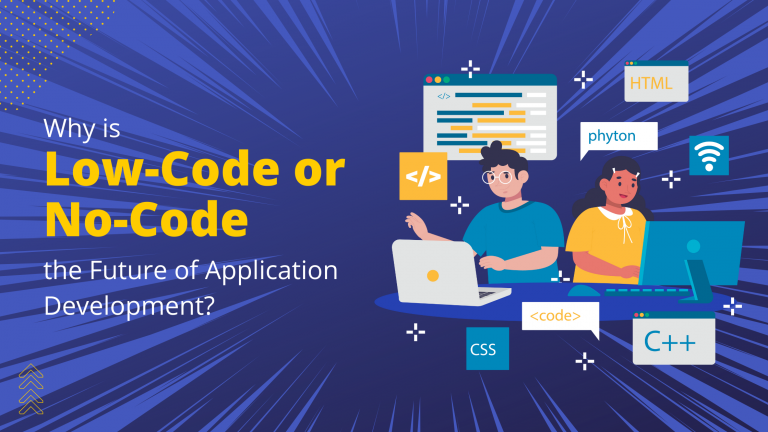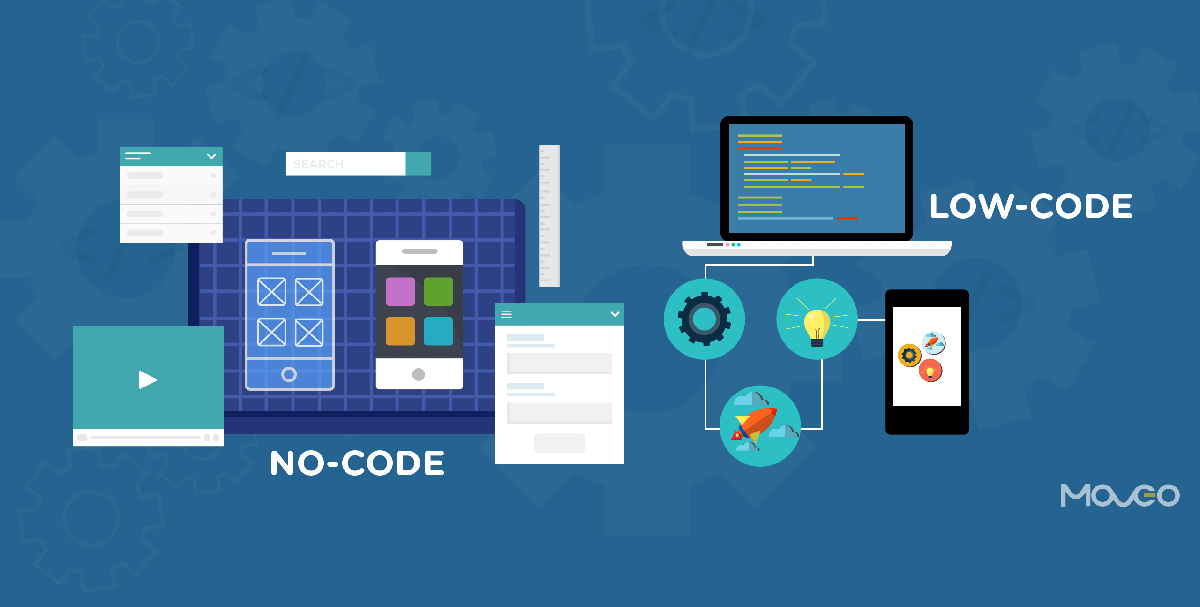Great Advice To Selecting application development with Low-code platforms
Great Advice To Selecting application development with Low-code platforms
Blog Article
The Benefits Of Low-Code Development For Non-Developers In Terms Accessibility
Due to a range of important factors, Low-Code Application Development is accessible to non developers. These are known as "citizen designers."
Drag-and-Drop Builders. Low-code platforms include drag-and -drop interfaces. This provides non-programmers with the ability to build applications visually, without writing code. This makes it much easier for people who don't have technical expertise to be involved in the process of development.
WYSIWYG: WYSIWYG editors are "What you see is what you get" editors that let users to design workflows and interfaces similar to the finished product. It makes it much simpler to use and understand.
Simplified logic and Workflow Design
Visual Workflow Design: Users are able to quickly design business processes and application logic using diagrams, models, and flowcharts. They are much easier to implement than traditional coding.
Pre-built Components for Logic: Low-code platform often includes already-built logic (e.g. loops or conditional statements) that are easily set up, eliminating the requirement for complicated programming.
Reusable Components and Templates
Library of Pre-built Templats: Many Low-Code platforms offer a collection of templates based on typical application types. Non-developers will be able to customize these templates if needed.
Reusable Widgets and Modules: With the help of the reuse of modules and widgets users can streamline the creation process and reduce the requirements for technical expertise.
Guided Development Tutorials and Guided Development:
Step-byStep Guides: Platforms will often offer guided development paths or online tutorials on-screen directions to help users who aren't developers to create applications.
Interactive Tutorials: Interactive and hands-on tutorials allow users to learn through doing. They gain confidence by making use of the platform.
Integration of existing tools:
Easy Integration - Low-code platforms can easily be integrated with existing systems and business tools (e.g. ERP CRM) which gives even non-developers the ability to build apps that are compatible to their workflows.
APIs, connectors: These tools make integration easier by allowing non-developers (or even end users) to link their applications to external services.
Collaboration Features:
Team Collaboration - Features like real-time collaboration between teams and shared workspaces enable non-developers to work effectively alongside professionals, developers, analysts, and others.
Role-Based Access Control: Those who are not developers are assigned roles with appropriate access levels, ensuring they are able to contribute to the development process without compromising security and functionality.
Automated testing and debugging:
Low-code platforms often come with integrated testing and debugging tools that makes this process easier. Non-developers are now able to verify that their app is working correctly.
Error highlighting: The platform highlights issues and suggests fixes to help non-developers.
The main benefit of developing low-code applications for non-developers is from its ability democratize the development process. By providing intuitive, visual tools and guided experiences low-code applications allow users of business to be actively involved in the creation and maintaining applications, bridging the gap between business needs and the technical implementation. Check out the most popular Low-code Platform for application development blog for more examples including rad application development, rapid application design, cloud software applications, cross platform app dev, app platforms, azure sql server, azure sql server, push notifications, cloud software applications, rapid app development and more.
Benefits Of Low Code Application Development For Governance And Security
Low-code software offers a variety of benefits for governance and cybersecurity and cybersecurity, which is essential to ensure that all apps are managed, well-managed and are compliant throughout their lifecycle. Here are the benefits of developing applications using low-code:
Unified Management Console: Low-code platform usually provides a central dashboard for administrators to control and monitor all applications, ensuring consistency governance across the entire organization.
Role-Based Access Control RBAC : These platforms typically have robust access controls based on roles, which enable administrators to create and enforce policies. Only authorized users are permitted to modify and access certain areas of the application.
Compliance and Regulatory Adherence
Many low code platforms include built-in compliance functions. They are designed to ensure that the applications are compliant with the industry standards (e.g. GDPR, HIPAA). They provide tools and frameworks to help ensure that applications are compliant with these requirements.
Audit trails and logs Audit trails that are comprehensive and logging are often integrated. This allows organizations to keep track of changes and access, as well as ensure conformity with internal rules and external ones.
New Security Measures to Improve Security
Data Encryption : Low-code platforms usually provide data encryption built-in in transit and at rest. This ensures that sensitive information will be protected.
Security Certifications: Many providers of low-code services have security certificates, such as ISO 27001 or SOC 2 which prove that they are able to meet the highest standards. These certificates offer further assurance to users.
Automated updates for security:
Regular Security Updates and Patches : Low-code platform handle automatic security patches, updates and updates. Thus, applications are protected from the latest threats without the need for the intervention of developers manually.
Security Monitoring Tools: These instruments send alerts that are updated in real time, and provide insight into potential security problems.
Data Governance
Data Access Policies These platforms assist organizations determine and enforce their data access policy and ensure only authorized users have access to data and that it is properly used.
Data Masking Anonymization: Built-in data masking tools and features to anonymize data help protect sensitive information, particularly in the development and testing phases.
Continuous application lifecycle management
Pipelines for Development and Deployment: Low-code platforms often provide integrated pipelines for development and deployment which include security checks to ensure that security is maintained throughout the application lifecycle.
Version Control: A unified version control system helps to manage changes, allowing any modifications that are made to an application to be monitored. If needed, these can be reverted and the integrity of the application ensured.
User Authentication, Authorization and Authorization
Single Sign-On: The ability for SSO and other advanced authentication methods simplify the management of users as well as enhances security.
Multi-Factor Authentication Most platforms come with integrated multi-factor authentication, which adds a layer of extra security for accessing applications.
Policy Enforcement and Compliance:
Low-code platforms usually come with policies templates pre-defined that enable organizations to implement cybersecurity and governance policies quickly.
Compliance Monitoring Tools - These instruments allow for continuous checking of compliance status and offer the ability to report, making it easier to find and correct potential issues.
Integrate with the existing security infrastructure:
Seamless Integration: Low-code platforms are designed to seamlessly integrate with existing security infrastructure and tools, such as identity management solutions SIEMs (Security Information and Event Management Solutions), and firewalls.
API Security: Built in API security features safeguard information, guarantee integrity of the application and ensure safe integrations.
Training and Best Practices
Good practices: Several platforms have guidelines for creating secure applications, and offer best practices. This can help non-developers comply with security standards.
Some lowcode providers offer assistance and security training to users to help them understand how they can build and maintain a secure application.
The security and governance capabilities of low-code applications make sure that they are built and managed in a safe and secure manner. These platforms contain the frameworks and tools needed to supervise and control development of applications, as well as protect sensitive data while maintaining legal compliance and enforcing the policies. View the best he said on Legacy application modernization with Low-code for site tips including application development platforms, app modernization, stored sql procedures, no code platforms, push alerts, cross platform mobile development, application development platforms, developing mobile apps, application modernization, stored sql procedures and more.
Benefits Low-Code App Development With Respect To Limitations And Customization
Low-code applications are a flexible, balanced approach that addresses issues and permits modification. Here are a few of the principal benefits: Handling limitations:
Overcoming Complexity Barriers:
Simple development: Low-code platforms streamline the process by offering templates and pre-built components. This allows faster application deployment, even for complicated ones.
Many platforms have guided workflows, which assist developers navigate through complicated procedures. They minimize the risk of making mistakes and help maintain uniformity.
Scalability Solutions
Built-in Scalability: Low-code platforms have many features that allow for scalable architectural design, allowing applications to take on a greater loads without major redevelopment.
Performance Monitoring: Integrated tools for performance monitoring and optimization can ensure that applications remain efficient when they grow.
Security and Compliance
Low-code platforms have built-in security options, such as role-based security access control as well as encryption and automated checks to ensure security compliance. These features address commonly-asked security issues.
Platforms frequently update their security and compliance measures to ensure that their applications are secure against threats that change.
Capabilities to Customize:
Extensibility:
Custom Code Integration: Low-code platforms usually allow the integration of custom code (e.g., JavaScript, Python), enabling developers to expand the capabilities beyond the basic features.
Developers are able to add custom modules or plugins to meet the specific requirements of business.
APIs & Integration:
API Support. Complete API support allows seamless integration with external services and systems, which allows for an extensive amount of modification and connection.
Low-Code Platforms: These platforms come with built-in connectors for popular third-party service providers, making it simple to integrate and customize apps.
Flexible UI/UX:
Customizable user interfaces for developers: Developers can modify and design the user interfaces in order to satisfy specific branding requirements and requirements for usability, resulting in a tailored experience for users.
Responsive Designs: The software can be tailored to fit different screen sizes and devices.
Business Logic Customization
Visual Workflow Builds Visual tools that allow for the customization of workflows and business rules as well as to design complicated, tailored processes.
Conditional Logic & scripting: Platforms permit the use of conditional logic, and scripting that is custom-made to handle specific business rules.
Data Management
Custom Data models: Developers can to create custom data models to meet specific application requirements and make sure that data handling meets business requirements.
Advanced Data Processing Integration advanced tools for data handling permit the customization of data analysis and usage in the program.
Customisation and balancing limits:
Frameworks, Standards and Standards:
Low-code platforms are compliant with industry standards and best practice. This allows for high-quality and secure applications.
Governance Frameworks. Built in governance frameworks ensure that any modifications are not harmful to the security, integrity or the compliance of an application.
Iterative Design and Feedback
Rapid prototyping: Developers are able to quickly prototype and test customizations in response to feedback from users, improving the application in line with their preferences.
Low-code platforms facilitate constant improvement through continuous customization and further enhancing the platform as requirements of business evolve.
User Empowerment:
Low-code platforms allow citizen developers to develop by allowing non-developers with intuitive interfaces, to personalize applications, they increase the pool contributors that can improve and customize apps.
Training and Support Information: Many platforms offer an extensive set of training and support resources to help users customize applications without jeopardizing their stability or performance.
Low-code software provides a scalable framework that can be customized to meet the specific requirements. This allows businesses to develop and maintain applications that are efficient, adapted to meet their needs, and adhere to high standards of security, quality and scaling.